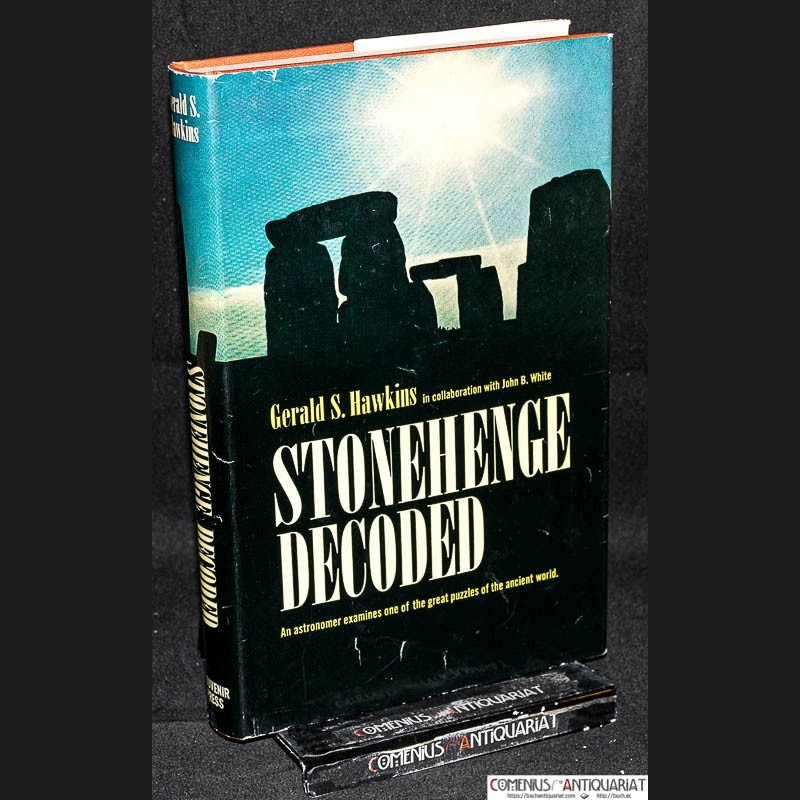Hawkins, Gerald S.,
Stonehenge decoded. London: Souvenir Press, 1966. Seiten mit Abbildungen, Literaturverzeichnis und Register. Leinen mit Schutzumschlag. 496 g
* In collaboration with John B. White. Mit beigelegten Zeitungsartikeln.
Bestell-Nr.156276
Hawkins |
Mythen |
Mythologie |
Grossbritannien |
Stonehenge |
Vorgeschichte |
Fruehgeschichte |
Megalithic Monuments |
Prehistoric
Stonehenge, that awesome arrangement of stones on Salisbury Plain, has been the subject of countless studies, poems, and legends dating back beyond the days of King Arthur and his court. What did this sombre group of stones signify to its architects? Was it a city of the dead? A Druid altar of sacrifice? A temple to the sun? It took the 20th Century, an astronomer, and computer techniques to unravel the ancient mystery.
The dramatic decoding of the mystery began when astronomer Hawkins decided to investigate the reason for that particular, peculiar arrangement of stones and holes at Stonehenge. He stood at each position and measured its various alignments. He got up in the middle of the night to photograph the dramatic midsummer sunrise over the giant heel stone. Then he fed the measurements he had taken and certain astronomical data into a computer and his original theories were confirmed. The dramatic facts were :
— Each significant stone aligns with at least one other to point to some extreme position of the sun or moon.
— The mysterious aubrey holes were probably used as an eclipse predictor. All the evidence indicated that Stonehenge was a sophisticated and brilliantly conceived astronomical observatory, used by three different groups of people over a 400 year period beginning around 1900 B.C.
As Dr. Hawkins recreates his dramatic discovery he tells of the mythology that has grown up around Stonehenge and of the remarkable techniques that were employed to bring the stones across 100 miles of sea and land to their site of construction. Anyone who has seen a picture of the fabulous structure will be enthralled by this captivating account of one of the most significant archaeological and astronomical discoveries of our time.
GERALD S. HAWKINS is Professor of Astronomy at Boston University and research associate at the Harvard College Observatory. He lives in Wellesley Hills, Massachusetts.
JOHN B. WHITE is editor and exhibits arranger for the Smithsonian Astrophysical Observatory. Also a book reviewer and writer, Dr. White resides in Cambridge, Massachusetts.






 Datenschutz
Datenschutz
 Versandkosten
Versandkosten
 Google Mail
Google Mail
